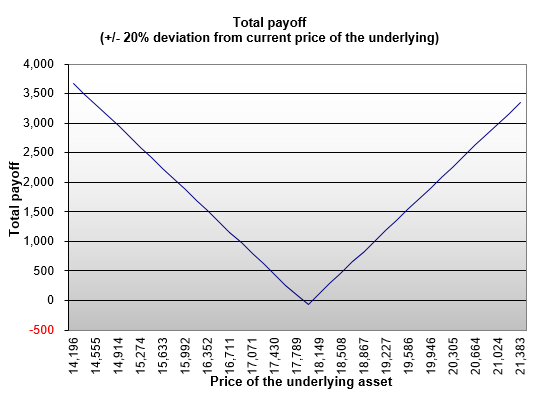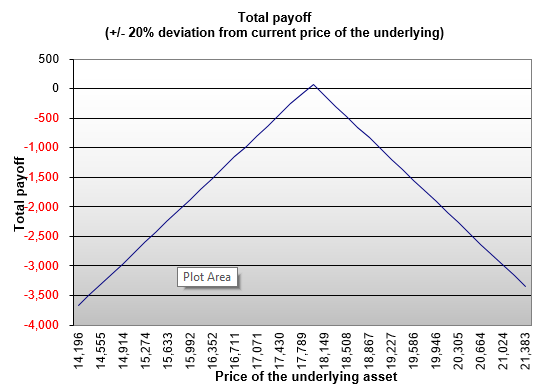What Are Options?
Options are contracts which derive their value from an underlying asset. This asset can be a stock, an index, a currency or a commodity. So, options are financial contracts which gives the buyer the right but not the obligation to buy or sell the underlying asset at the expiration date of the contract at the strike price. Now you must be wondering what is expiration date and the strike price? Well, the expiration date is the last date on which the holder of the option may exercise the contract. So, the holder has three options – either sell the option or exercise the option or let the contract expire. Strike price is the price at which you buy or sell a particular contract. For example, if the stock of Hindustan Unilever is trading at Rs 2,290 and if you are expecting a 7% increase in price, then you can buy a call option. Overall options have the potential to offer higher returns in a short span if you smartly trade in them. There are various strategies which are followed by option traders and one such popular strategy is the straddle strategy. Recommended reading: Options Trading: Basic to Advance Concepts SimplifiedWhat is Straddle Strategy?
Normally, when you invest in a stock or any asset class there is a 50-50 probability that the prices might go up or go down. But the straddle strategy is one such strategy through which you can earn exponential returns while minimising risk.A Straddle Strategy Has Two Major Types
1. A Long Straddle
A long straddle is a limited risk – unlimited profit options strategy where trader buys a call and a put of same strike price as well as of the same expiry. This is usually done when a trader is expecting a big move in the underlying asset. Let’s take an example. Currently Nifty is trading at 17,969.35 and you are expecting that the index to move up and hence you buy a call and put option of 17,950. Where the lot size is 50.- The premium you must pay to buy a call option of 17,950 is Rs 55.7
- The premium you must pay to buy a put option of 17,950 is Rs 27.5
| Nifty at Expiry | Profit or Loss from call option | Profit or Loss from put option | Total payoff |
| 17,700 | -2,785 | 11,125 | 8,340 |
| 17,750 | -2,785 | 8,625 | 5,840 |
| 17,800 | -2,785 | 6,125 | 3,340 |
| 17,850 | -2,785 | 3,625 | 840 |
| 17,900 | -2,785 | 1,125 | -1,660 |
| 17,950 | -2,785 | -1,375 | -4,160 |
| 18,000 | -2,735 | -1,375 | -4,110 |
| 18,050 | 2,215 | -1,375 | 840 |
| 18,100 | 4,715 | -1,375 | 3,340 |
| 18,150 | 7,215 | -1,375 | 5,840 |
| 18,200 | 9,715 | -1,375 | 8,340 |

2. Short Straddle
A short straddle is the complete opposite of long straddle. This is a limited profit and unlimited loss strategy. Here the trader expects the underlying asset to have less volatility. So, he will sell a put and a call of the same strike price and the expiration date. For example, you are expecting that the index would have very low volatility in this month and hence you sell a put and a call option of 17,950. Here are the possible profits or loss you could make at different levels of nifty.| Nifty at Expiry | Profit or Loss from call option | Profit or Loss from put option | Total payoff |
| 17,700 | 2,785 | -11,125 | -8,340 |
| 17,750 | 2,785 | -8,625 | -5,840 |
| 17,800 | 2,785 | -6,125 | -3,340 |
| 17,850 | 2 ,785 | -3,625 | -3,625 |
| 17,900 | 2,785 | -1,125 | 1,660 |
| 17,950 | 2,785 | 1,375 | 4,160 |
| 18,000 | 2,735 | 1,375 | 4,110 |
| 18,050 | -2,215 | 1,375 | -840 |
| 18,100 | -4,715 | 1,375 | -3,340 |
| 18,150 | -7,215 | 1,375 | -5,840 |
| 18,200 | -9,715 | 1,375 | -8,340 |




 Easy & quick
Easy & quick
Leave A Comment?